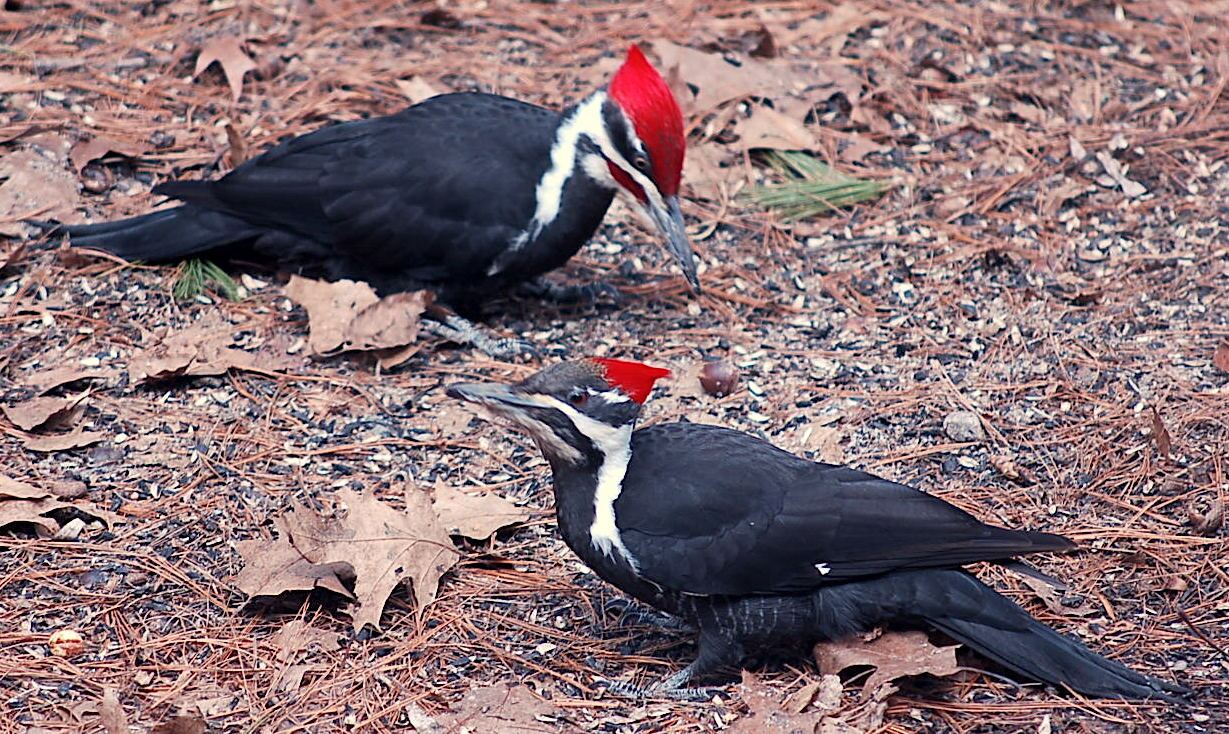Checking Out Woodpeckers in Florida Habitats: Where to Find These Birds
Wiki Article
Woodpeckers Unleashed: Discovering the Marvels of These Proficient Tree Mountain Climbers
Woodpeckers, with their distinct markings and rhythmic drumming resembling with wooded locations, hold a special location in the bird globe - Woodpeckers in Florida. As we delve into the complex details of woodpeckers' nesting routines, feeding strategies, and the recurring preservation initiatives to shield these exceptional birds, a much deeper appreciation for their area in nature unravels.Makeup and Adaptations
When analyzing the composition and adaptations of woodpeckers, one can observe impressive attributes that enable these birds to grow in their specialized environmental niche. Woodpeckers are geared up with a collection of one-of-a-kind anatomical qualities that aid them in their woodpecking actions. Among one of the most famous attributes is their solid, chisel-like beak, which is specialized for exploration into timber to reveal pests or develop nesting dental caries. This beak is supported by strong neck muscles and a very established head framework that functions as a shock absorber, permitting woodpeckers to continuously peck at trees without triggering brain injury. Additionally, woodpeckers have zygodactyl feet, with two toes dealing with forward and two dealing with backward, offering a firm grasp on tree trunks while they look for food or drum for communication.Additionally, woodpeckers have a special tongue structure that is long, barbed, and sticky, enabling them to draw out bugs from holes in timber. This specific adaptation permits woodpeckers to exploit a food source that is hard to reach to lots of other bird species. On the whole, the composition and adjustments of woodpeckers showcase the remarkable evolutionary solutions that have actually enabled these birds to thrive in their arboreal environment.
Drumming Habits
Having actually discovered the composition and adjustments of woodpeckers, the focus currently moves to understanding their drumming actions, a distinct aspect of their interaction and territorial displays. Drumming is an essential form of interaction among woodpeckers, offering multiple functions such as establishing territories, bring in companions, and signaling alarm. Each woodpecker types has an unique drumming pattern that assists individuals acknowledge participants of their own varieties and distinguish them from rivals or killers.Woodpeckers generate drumming noises by swiftly pecking on resonant surfaces such as dead trees, utility posts, and even metal items, creating a series of rhythmic beats. The strength and rate of drumming can vary based on the objective; as an example, a quick drumming sequence may indicate aggression towards trespassers, while a slower and softer drumming pattern can suggest courtship (Woodpeckers in Florida). Furthermore, woodpeckers might readjust the frequency and duration of their drumming to convey certain messages effectively
Nesting Practices
Checking out the nesting routines of woodpeckers exposes remarkable understandings into their reproductive actions and environment selections. Woodpeckers are recognized for their unique nesting choices, frequently excavating cavities in trees to produce protected areas for raising their young. These cavities offer not only as a nesting site however additionally as a protected sanctuary from killers and inclement climate.Woodpeckers display a high degree of integrity to their nesting websites, commonly returning to the very same area every year. This habits highlights the importance of suitable habitat schedule for their reproductive success. The choice of a nesting site is critical for woodpeckers, with aspects such as tree types, height, and degeneration stage playing considerable duties in their decision-making process.
Remarkably, some woodpecker species are known to dig deep into multiple dental caries within their area, providing themselves with alternative nesting alternatives. This strategy might act as a kind of insurance coverage against possible hazards or disruptions to go to this site their primary nesting site.

Feeding Strategies
Woodpeckers employ a range of specialized feeding techniques to obtain their key food sources. One of one of the most unique feeding behaviors of woodpeckers is drumming, which involves rapid pecking on trees to reveal pests under the bark. This drumming not just helps them situate prey yet additionally works as a means of interaction with various other woodpeckers. Woodpeckers have solid, chisel-like beaks that permit them to pierce into timber easily. Once a hole is developed, they use their long, barbed tongues to extract bugs such as ants, beetles, larvae, and crawlers. These tongues are coated with sticky saliva that aids catch the target. Woodpeckers are additionally understood to excavate dental caries in trees to accessibility concealed insect larvae or sap. Some types, like the acorn woodpecker, shop nuts in specially created holes called granaries. This calculated storing of food aids them survive throughout food scarcity durations. Woodpeckers are truly amazing in their feeding strategies, showcasing adaptability and intelligence in obtaining their nourishment.Conservation Initiatives
Amidst the detailed feeding techniques displayed by woodpeckers, the preservation efforts targeted at guarding these interesting birds play a critical function in maintaining their environments and populations. Woodpeckers deal with different dangers to their survival, consisting of habitat loss because of logging, climate change altering their communities, and accidents with man-made frameworks such as structures websites and cars - Woodpeckers in Florida. Conservationists are actively working to deal with these obstacles and guarantee the long-lasting health of woodpecker species
Education and public understanding campaigns are likewise crucial components of woodpecker preservation initiatives. By elevating understanding about the importance of these birds in preserving healthy and balanced woodland ecological communities, conservationists can amass assistance for environment preservation initiatives and advertise liable land monitoring methods. Via collaborative efforts look at these guys between researchers, policymakers, and local areas, we can function together to secure a future where woodpeckers prosper in their all-natural environments.
Conclusion

Report this wiki page